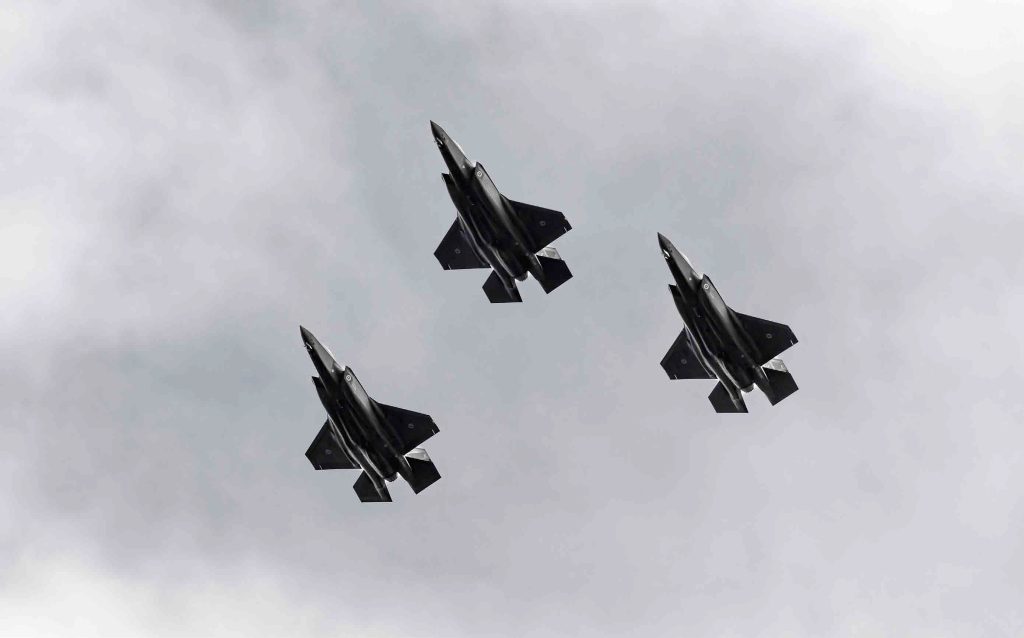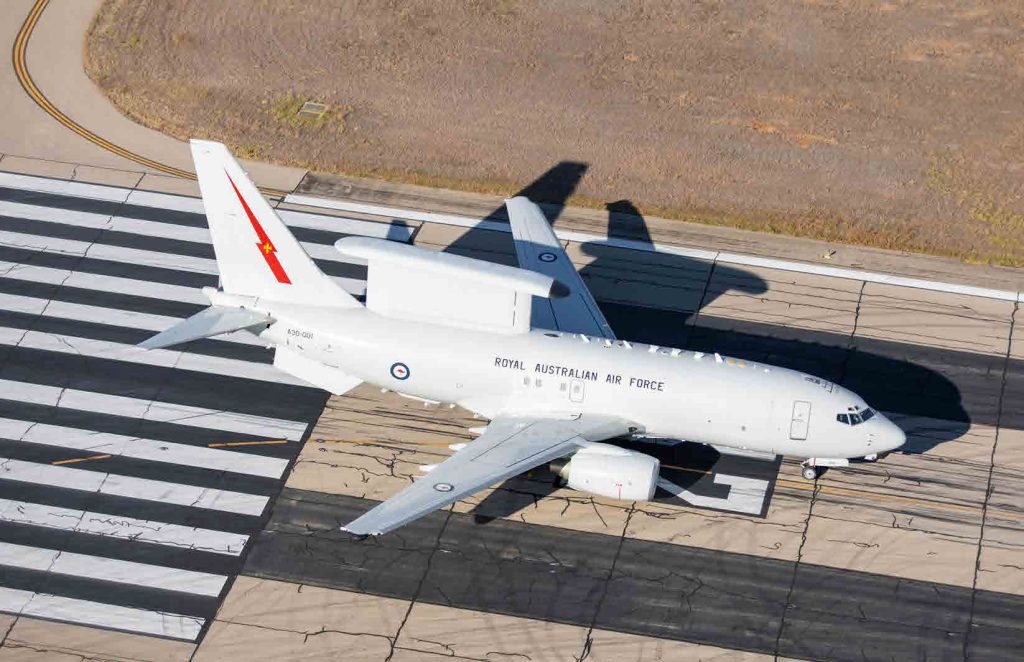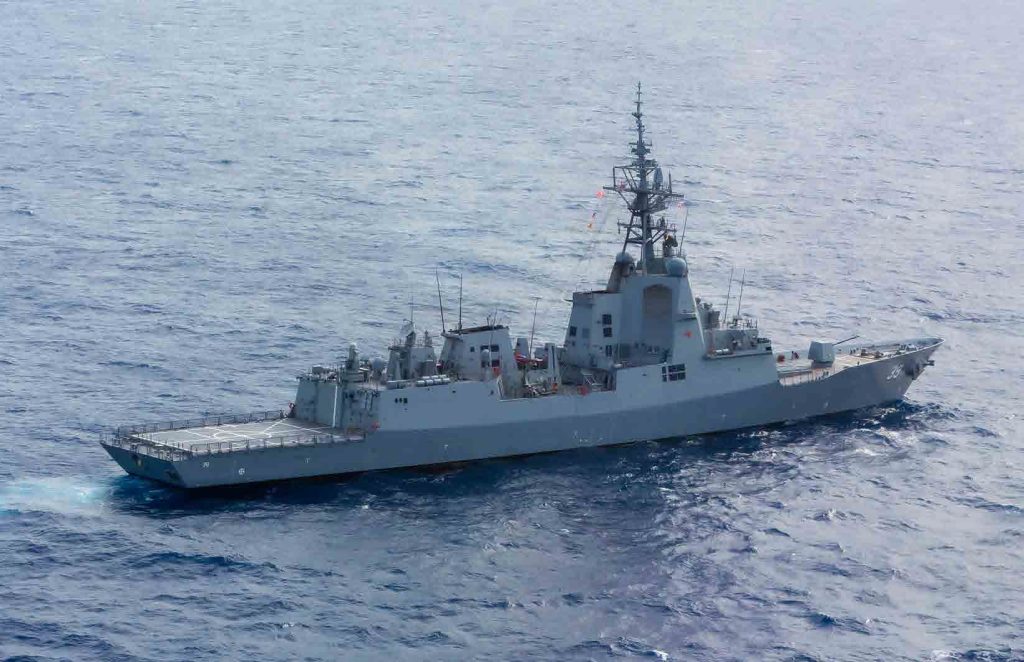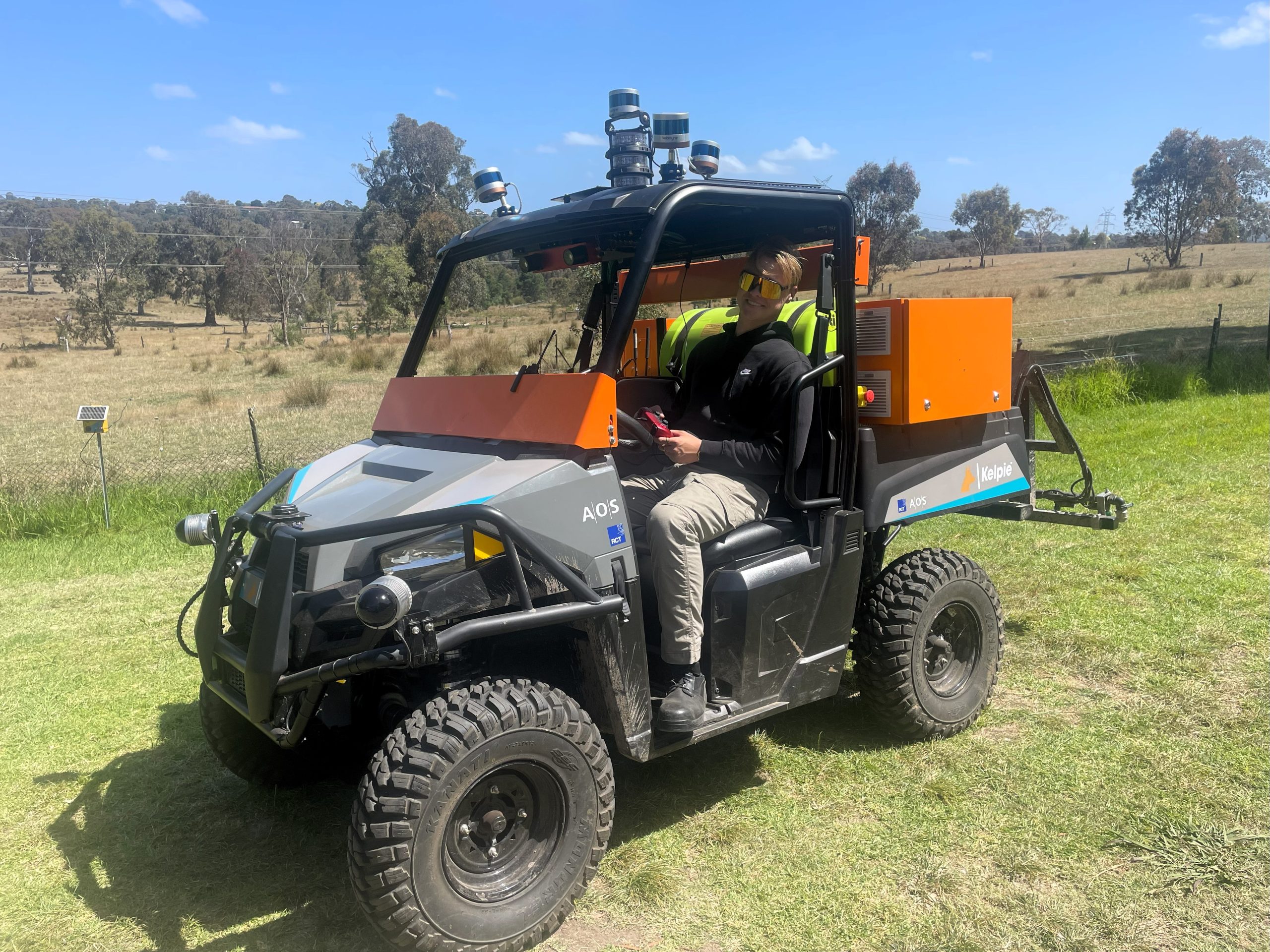The following is a reprint of an article written by Kym Bergmann for the Asia Pacific Defence Reporter magazine – February 2023.
As recent events are demonstrating, airborne threats are getting deadlier, able to not only target military systems but also do serious damage to the civilian infrastructure of a country. This is occurring almost daily with Russia’s continuing bombardment of the power grid of Ukraine and the destruction – intentional or otherwise – of assorted hospitals, schools and apartment buildings.

While Kiev shows no sign of surrender – on the contrary the continuous pounding seems to be having the opposite effect – what is clearly being demonstrated is the need for a country to protect itself from this sort of bombardment. A variety of air defence systems are being rushed to Ukraine to supplement their own ex-Warsaw Pact gear, with everything from Patriot batteries, IRST systems and even mobile, armoured Gepard twin 35mm anti-aircraft flak cannon being thrown into the mix. The details of how this variety of hardware from numerous suppliers is being coordinated by Ukraine is not known, but it seems to be working.
From the beginning of the conflict, Russia started losing fixed wing aircraft at an alarming rate, along with transport and attack helicopters. Around 300 platforms have been destroyed, including 55 fighter aircraft and 54 helicopters. This is believed to be far more than double Ukraine losses. As Russia has reverted to the use of missiles with high speeds and long stand-off ranges to reduce their aircraft losses, the Ukrainians have been shooting down large numbers of these as well – but on the nightly television news it is possible to see the awful consequences caused by the few that still manage to leak through.
More than seven years ago the RAAF started the planning for an overarching air and missile defensive system that could form a protective bubble over Australian military and civilian targets. This is the multi-phased AIR6500 series of projects, with two bids for Phase 1 currently under evaluation. These are to supply a Joint Air Battle Management System (JABMS) that will provide the software, sensors and communications for command and control functionality at the heart of a larger fully integrated solution.
Tranche 1 of Phase 1 includes four large air defence radars from Canberra-based CEA due to be delivered in 2024. These are active electronically scanned, fully digital, arrays that will be able to detect and track targets from distances – depending on various factors – of hundreds of kilometres. Tranche 2 might include additional sensors and will also grow the system to be interoperable with those of other nations.
Future phases of the project will acquire the effectors – the defensive missiles, almost certainly Patriot PAC-3, or whatever replaces it in the US inventory – and also a deployable system, potentially able to defend against hypersonic missiles, including TBMs.
The bids for the JAMBS come from two of the world’s most advanced defence electronics suppliers – Lockheed Martin Australia and Northrop Grumman Australia. Their proposals were delivered to Defence in late September 2022 and a selection of the preferred vendor should be announced mid-to-late this year. Both are extremely well qualified, and both are known as suppliers of some of the most advanced systems ever developed such as the F-35 Joint Strike Fighter and the B-21 long range bomber.
More importantly than building this sort of hardware – as impressive as it is – it is the ability of both companies to develop systems that move and coordinate vast amounts of real time data that will be at the heart of the JABMS. Both companies are fully committed to developing their solutions in Australia – with reach back as appropriate to their US parent programs – to aid the development of sovereign local capabilities.
In philosophy, their approaches sound similar, which is no particular surprise since they have great experience in the air and missile defence domain and have faced the same technical challenges with a host of US and international reference activities. Lockheed Martin can refer to the naval Aegis system and the F-35 program – both familiar to Australia. Northrop Grumman have a similar pedigree as suppliers of the F-35 radar, the B-21 bomber – and, most relevantly – the US Army’s Integrated Air and Missile Defense Battle Command System (IBCS), currently in Low-Rate Initial Production (LRIP).

A Royal Australian Air Force E-7A Wedgetail aircraft from No. 2 Squadron.
Credit: CoA / Annika Smit
What the final Australian system will do is bring in data from across the battlespace – which is potentially a huge area – including satellites, aircraft, ground-based sensors such as radars and from ships at sea. All of this information about threats and also friendly forces needs to be fused into a single picture to allow the JABMS to function effectively for integrated air and missile defence.
Lockheed Martin regards this as an exemplar program for Joint All-Domain Command & Control and believe that Australia is planning to field what will be the most advanced system in the western world. This has a number of elements, including replacing the existing air management system known as Vigilaire (a version of which is flying on the Wedgetail AEW&C aircraft) and control of aircraft and managing airspace.
The new system will also have electronic air battle management with full situational awareness of the full electromagnetic environment, with features such as electronic attack and communications reconfiguration during complex enemy jamming. To this will be added air and missile defence, which is a relatively new role for the RAAF. This has previously been done by assets such as the Aegis-equipped Hobart class air warfare destroyers and Army’s LAND 19 projects – Phase 7 of which is currently under development and will form an important part of the overall JABMS with the NASAMS system from Raytheon and Kongsberg.
AIR6500 will provide the core system architecture that will be expanded through the future AIR6502 and AIR6503 projects. The base system needs to not only take in and coordinate a vast amount of data but also to fuse that so operators can perform their various functions from vectoring aircraft to engaging incoming cruise missiles to jamming an enemy’s AWAC aircraft. To be effective, it will need to use elements of AI so that operators can make informed and rapid decisions about which tasks to prioritise.
Lockheed Martin emphasise that the system they have offered is based on an open architecture approach so that different vendors can include their technologies using a “best of breed” approach. The company believes that the system will continually evolve during its lifetime and particularly during the first decade. In general terms, Lockheed Martin is moving away from being a supplier of platforms and instead has the vision of being at the forefront of connectivity, focusing on sensor fusion, communications and data analytics.
An important element of Lockheed Martin’s AIR6500 bid is the investment of $74 million announced in October to develop and sustain a national Integrated Air and Missile Defence (IAMD) Ecosystem in Australia. The company says this will position Australia for a key role in the IAMD global supply chain and will bring government, industry and academia together to create, enhance and maintain capability for the long-term.
It will put the connectivity, infrastructure and process in place for organisations to gain access, bring technology and contribute for the next several decades. Designed to be fully inclusive, it will support connectivity to stakeholder nodes across Australia that will allow low-cost access and opportunity regardless of location.
Lockheed Martin says the concept behind the Ecosystem is that it will use seed funding for accelerating workforce skilling and collaboration at a national level which will create world-leading capabilities that generate Australian economic benefit, jobs and export opportunities. The company says that this commitment is not conditional on winning Phase 1 – nor are they double counting previous investments. The Ecosystem will be managed by Lockheed Martin and will function with the involvement of Defence.
It’s a similarly positive message from Northrop Grumman with an emphasis on technology transfer and the development of an all-Australian workforce for the program. They too have considerable experience in supplying advanced air and missile defence systems able to function in complex environments. The company says it is taking an open architecture, modular, scalable, system-of-systems approach to AIR6500.
Perhaps their most important reference system – and conceptually one that’s relatively easy to understand – is the US Army’s Integrated Battle Command System (IBCS) and also the Forward Area Air Defense Command and Control (FAAD C2). IBCS – which is also being exported to Poland – provides operators with an integrated air picture and is designed so that sensors and weapons that might not have been designed to work together can in fact share data and be used against hostile threats.
The company has conducted numerous tests using a variety of weapons and sensors – often from other suppliers – to show that IBCS can indeed fuse complex information to allow effective countermeasures to be applied. The US has the challenge of making systems developed for individual services work together and be sufficiently capable of dealing with airborne threats that might vary from small drones, through to crewed aircraft and all the way up to ballistic and hypersonic missiles.

Royal Australian Navy destroyer HMAS Hobart off Australia’s east Coast during Exercise Diamond Seas 2022.
Credit: CoA / Annika Smit
At a test at White Sands missile range in 2021, IBCS was integrated not only with US Army sensors in the form of two Sentinel short range surveillance radars, a legacy Patriot radar, a networked US Marine Corps Gator radar and two USAF F-35s. The threat came from two cruise missiles travelling south supported by jamming and targeting the two short range surveillance radars and the Patriot radar.
The jamming – Electronic Attack – was so severe that the track data provided had to come from the F-35s and the Gator radar. The system was able to track and engage the targets, successfully shooting down the first cruise missile and sparing the second one only because of the value of the onboard electronics it was carrying. The company has conducted numerous other live tests showing the effectiveness of IBC in connecting with other systems and multiple sensors.
The US Army will field IBC in 2024 and it has completed its initial major test and evaluation phase. Full rate production is expected to start in the next few months. As well as being considered by Australia, the system also is being looked at by Japan and possibly other nations.

AOS image added to show aircraft tracks.
As part of their Australian bid, Northrop Grumman have included AOS – full name Agent-Oriented Software Pty. Ltd. – a local defence contractor known for the last two decades (at least) for their work in artificial intelligence (AI), starting in 1997 for air combat modelling. This was back in an era when no one had heard of AI. The company then went on to become involved in a number of UK activities including the Taranis UCAV project and also the control of multiple UAVs.
Australia has a relatively small population and one of the challenges for AIR6500 is to come up with a system that is highly automated and doesn’t require a multitude of operators – a task for which AI is well suited. At the same time, we have to prepare for the possibility of countering a very major threat that could involve multiple missiles, aircraft and other assets.
Operators might have been staring at screens for hours at a time – and then suddenly be expected to deal with a crisis involving numerous incoming platforms from different directions and speeds. This might mean making decisions in seconds – complex tasks that most humans struggle with.
AOS has developed AI software tools that will allow the air battle managers to stay ahead of the situation rather than trying to catch up. The system is apparently easy to understand so operators can have a high level of confidence following the recommendations it produces – or even letting it make autonomous decisions. Some of its functionality is based on pattern of life evaluation where it is searching for things out of the ordinary and then alerting the operator to what is happening, greatly increasing efficiency and reducing stress.
If there are 1,000 tracks – not unusual for a large air defence system – the AOS approach assigns a software agent to each one, which, in turn, can perform functions such as accessing commercial aircraft flight planning data. The system can also build complex weather models, making it relatively easy to distinguish routine passenger flights from something that might be more threatening – and then alerts the operator accordingly.
One does not envy Defence the job of trying to chose between two exceptionally well credentialed prime contractors.


